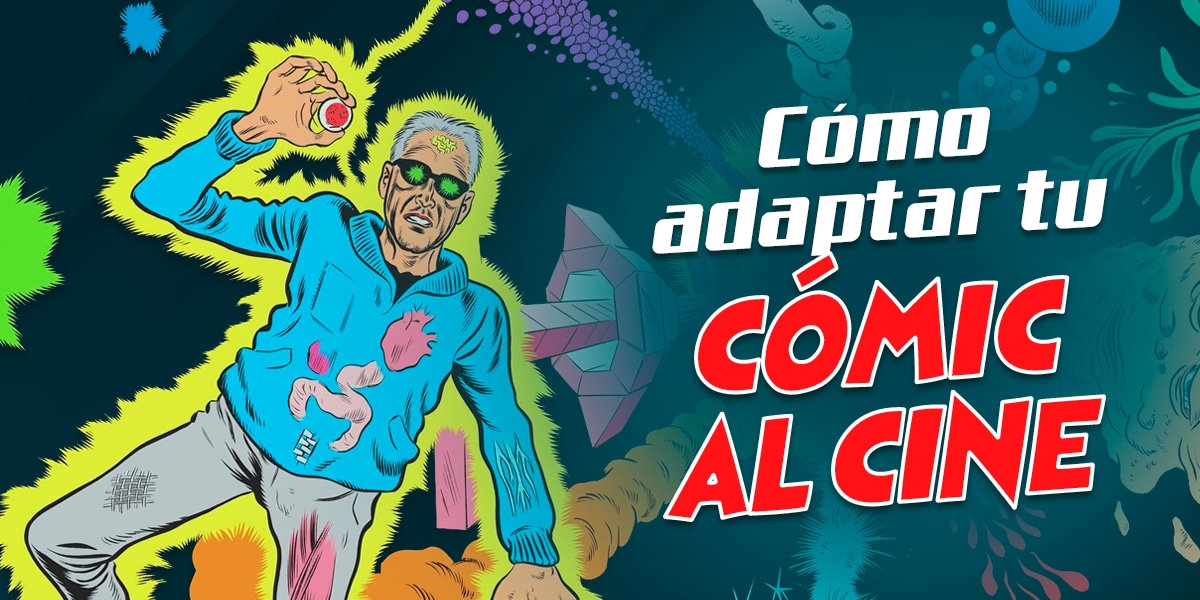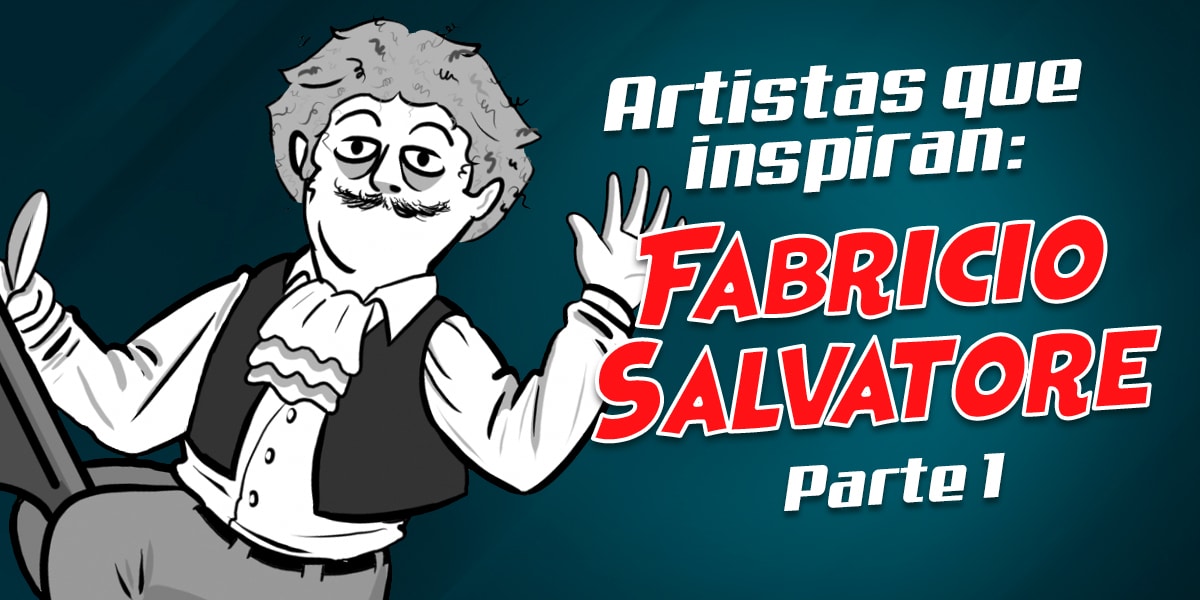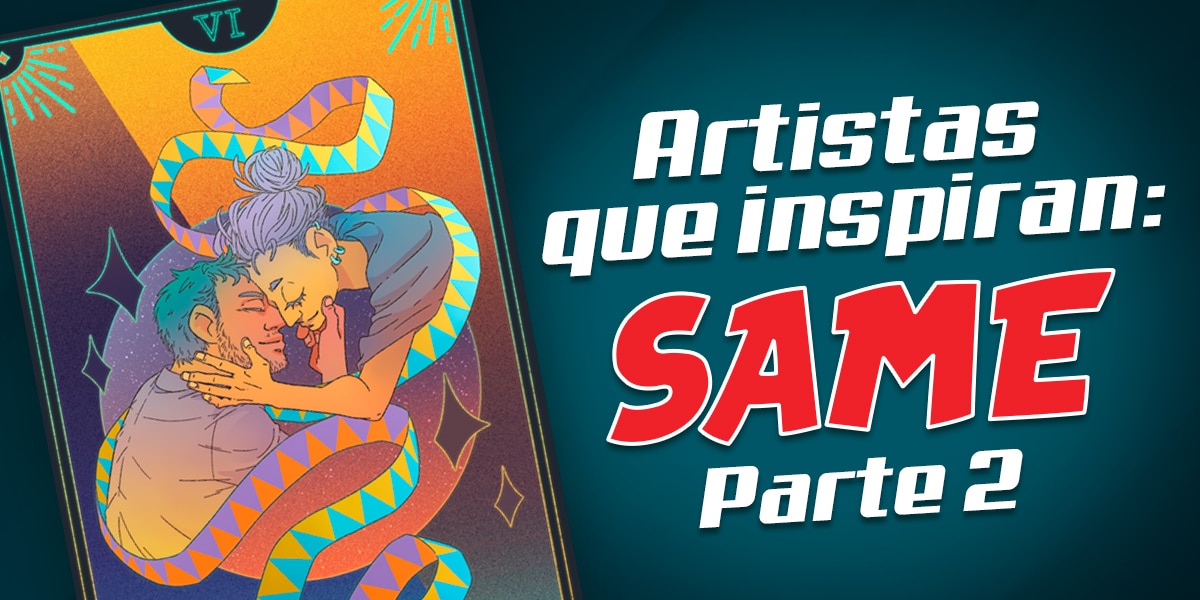La experiencia de Daniel Clowes adaptando su cómic al cine
¿Alguna vez te has preguntado cómo sería ver tu cómic favorito cobrar vida en la gran pantalla? ¿Te has imaginado el desafío de transformar viñetas estáticas en escenas dinámicas? Prepárate para sumergirte en el fascinante mundo de la adaptación cinematográfica de la mano de uno de los maestros del cómic: Daniel Clowes. En este artículo, descubriremos los entresijos, desafíos y sorpresas que experimentó este icónico dibujante al llevar su obra maestra “Ghost World” al cine. ¡Acompáñanos en este viaje del papel a la pantalla!
Por Chuky Rossi
Del lápiz a la cámara: El viaje de Ghost World al celuloide
Si eres un apasionado del noveno arte, es casi seguro que el nombre de Daniel Clowes resuene en tu mente. Este virtuoso de la narrativa gráfica estadounidense nos ha regalado verdaderas joyas como “Like a Velvet Glove Cast in Iron”, “David Boring” e “Ice Haven”. Pero sin duda, su obra más emblemática es “Ghost World”, una historia que captura la esencia de la adolescencia tardía a través de las vivencias de Enid y Rebecca, dos jóvenes que navegan por los turbulentos mares de la transición a la adultez en una típica ciudad estadounidense de los 90.
En 2001, el destino llamó a la puerta de Clowes en forma de una propuesta irresistible: Terry Zwigoff, el aclamado director del documental sobre Robert Crumb, le ofreció la oportunidad de llevar “Ghost World” a la gran pantalla. ¿Te imaginas la emoción de ver tus personajes cobrar vida? Pues bien, esa fue solo la punta del iceberg de una aventura llena de desafíos, aprendizajes y sorpresas que Clowes estaba a punto de emprender.
A lo largo de este artículo, te llevaremos de la mano por el fascinante proceso de adaptación, revelando los secretos, obstáculos y triunfos que Clowes experimentó en su incursión en el mundo del cine. Prepárate para descubrir cómo se transforma un universo de papel y tinta en una experiencia audiovisual cautivadora. ¡Luces, cámara, acción!
Más allá de la transcripción: El arte de adaptar un cómic al cine
Cuando Terry Zwigoff contactó a Clowes para llevar “Ghost World” a la pantalla grande, el dibujante se vio inundado por una mezcla de emoción y expectativa. Después de todo, ¿quién rechazaría una propuesta del director que había inmortalizado la vida y obra de Robert Crumb en celuloide? Sin embargo, lo que Clowes no anticipaba era la magnitud del desafío que tenía por delante.
En su inocencia inicial, Clowes pensó que adaptar su cómic sería tan sencillo como transcribir los diálogos y cambiar los dibujos por descripciones. Se imaginó escribiendo algo así como “Enid sentada en un banco, dice esta frase”. Pero la realidad le dio una lección que cambiaría su perspectiva para siempre.
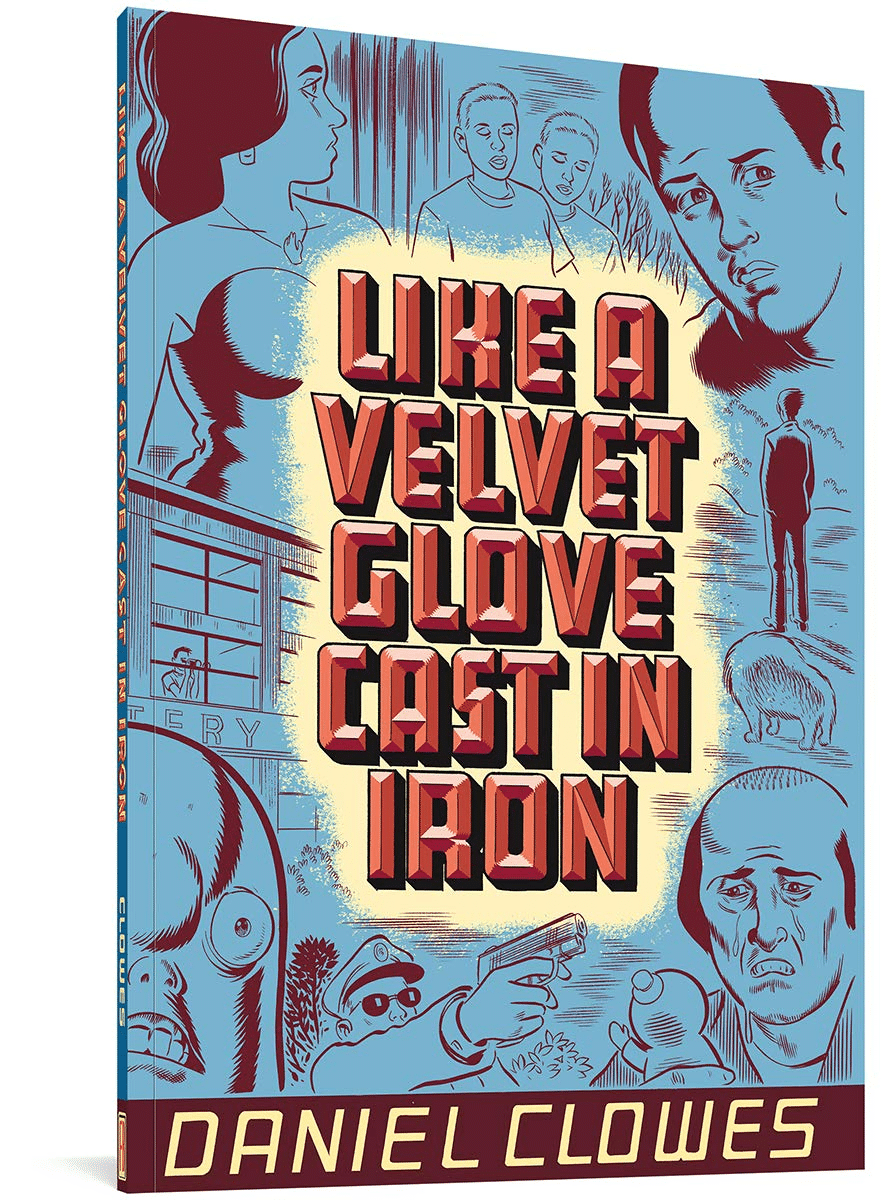
Cuando la productora recibió el primer borrador de Clowes, la reacción fue de asombro, pero no en el sentido que el dibujante esperaba. Le explicaron que lo que necesitaban no era una mera transcripción del cómic, sino un guion cinematográfico en toda regla. Este momento fue una revelación para Clowes: adaptar no significaba simplemente trasladar, sino transformar.
Esta experiencia nos enseña una valiosa lección sobre la versatilidad y adaptabilidad que requiere el arte del dibujo y la narración visual. Si estás interesado en explorar cómo desarrollar estas habilidades fundamentales para cualquier artista gráfico, haz clic aquí para descubrir recursos que te ayudarán a perfeccionar tu técnica. Recuerda, la flexibilidad creativa es clave en el mundo del arte y el entretenimiento.
A partir de ese momento, Clowes se embarcó en un proceso de aprendizaje y colaboración que transformaría no solo su obra, sino también su comprensión del arte narrativo en diferentes medios. Junto con Terry Zwigoff, comenzó a reimaginar el mundo de “Ghost World”, creando nuevos personajes y desarrollando los existentes de maneras que nunca había considerado en el cómic original.
Este proceso no estuvo exento de frustraciones. Clowes a menudo se encontraba anhelando poder plasmar exactamente los tonos de voz y las actitudes de los personajes tal como los había concebido en su mente y en las páginas de su cómic. Sin embargo, pronto comprendió una verdad fundamental del cine: los actores y el director aportan sus propias sensibilidades e interpretaciones a los personajes.
La lección más valiosa que Clowes extrajo de esta experiencia fue la importancia de la colaboración y la apertura a nuevas ideas. Aprendió a confiar en el proceso creativo colectivo del cine, permitiendo que los actores encarnaran a los personajes con sus propias sensibilidades y reconociendo que las ideas de Terry Zwigoff eran fundamentales para traducir eficazmente su obra al lenguaje cinematográfico.
El desafío de capturar la esencia visual: Del papel a la pantalla
Uno de los aspectos más fascinantes y desafiantes de adaptar “Ghost World” al cine fue el intento de recrear la distintiva estética visual del cómic. Clowes y Zwigoff se embarcaron en la ardua tarea de traducir el característico tono azul que acompaña al blanco y negro en las páginas del cómic a un medio completamente diferente.
Para Clowes, este tono azul era mucho más que un simple elemento estético; era una parte integral de la atmósfera de “Ghost World”. El color evocaba recuerdos personales de su propia adolescencia en Chicago, cuando caminaba por las calles al amanecer y observaba la luz azulada de los televisores filtrándose por las ventanas de las casas. Esta imagen, con su mezcla de melancolía y misterio, capturaba perfectamente la esencia de la historia de Enid y su transición a la adultez.
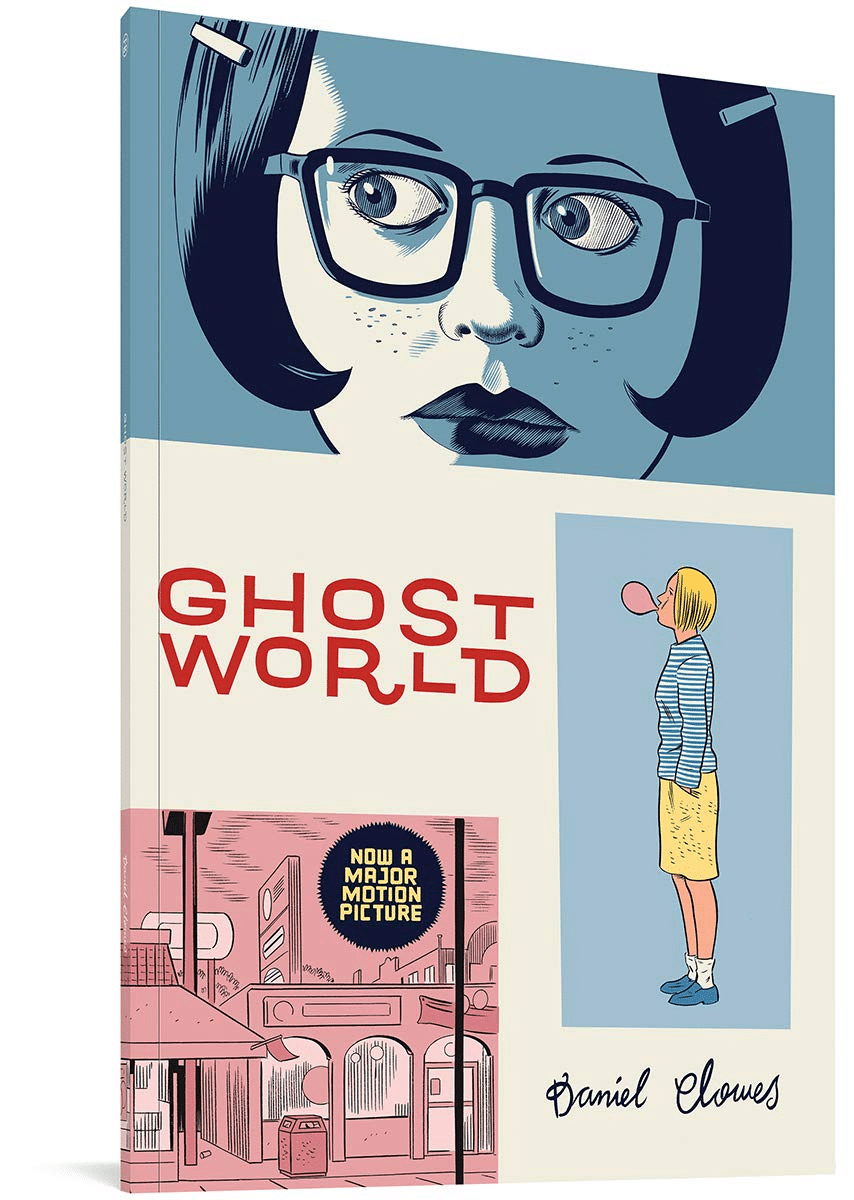
El equipo de producción se esforzó por recrear esta atmósfera única en la película. Experimentaron con diferentes técnicas de iluminación, incluso llegando a filmar con un tipo específico de luz azul. Sin embargo, a pesar de sus esfuerzos, el resultado no logró capturar convincentemente la esencia del cómic y finalmente tuvieron que descartar esta aproximación.
Este desafío ilustra perfectamente la complejidad de traducir elementos visuales estáticos a un medio dinámico como el cine. Lo que funciona en una página impresa no siempre se traslada efectivamente a la pantalla. Para los artistas que buscan expandir sus habilidades y explorar diferentes medios visuales, aquí encontrarás recursos para llevar tu arte al siguiente nivel, ya sea en cómics, ilustración o incluso storyboards para cine.
A pesar de no poder replicar exactamente la paleta de colores del cómic, Clowes y Zwigoff lograron capturar la esencia de “Ghost World” a través de otros elementos visuales. La dirección de arte, el diseño de vestuario y la elección de locaciones trabajaron en conjunto para crear una atmósfera que, aunque diferente a la del cómic, mantenía su espíritu único.
El dibujante en el set: Decisiones cruciales y detalles personales
Una de las experiencias más surrealistas para Daniel Clowes durante la producción de “Ghost World” fue su participación directa en aspectos clave del diseño visual de la película. El director y el equipo de producción le otorgaron la oportunidad de influir en elementos cruciales que darían vida a su visión en la pantalla grande.
Clowes tuvo la tarea de elegir el vestuario para el personaje de Enid, la protagonista. Esta responsabilidad iba más allá de simplemente seleccionar ropa; se trataba de capturar la esencia del personaje, su personalidad y su evolución a lo largo de la historia. Cada prenda, cada accesorio, debía reflejar no solo el estilo visual del cómic, sino también la complejidad emocional de Enid.
Pero quizás el momento más emotivo para Clowes fue cuando se le permitió decidir sobre la decoración del dormitorio de Enid. Imagina por un momento ver tu creación cobrar vida, no solo en los diálogos y las acciones, sino en los detalles más íntimos y personales. Clowes describe la experiencia de ver objetos de su propia adolescencia, como su sacapuntas personal, en la habitación de Enid como algo “muy extraño y personal”.
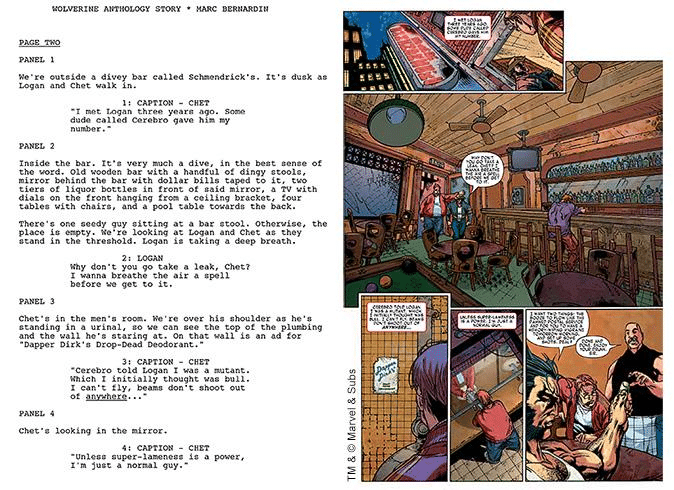
Esta atención al detalle y la capacidad de infundir elementos personales en una producción a gran escala demuestran la importancia de mantener la autenticidad en el proceso creativo. Para aquellos interesados en desarrollar habilidades que les permitan trasladar sus ideas del papel a otros medios, te invitamos a explorar recursos que potenciarán tu creatividad y expresión artística.
La experiencia de Clowes en el set no solo enriqueció la película, sino que también le proporcionó una nueva perspectiva sobre su propio trabajo. Ver cómo cada elemento, desde el más grande hasta el más pequeño, contribuía a dar vida a su visión, fue una lección invaluable sobre la importancia de la colaboración y la atención al detalle en el proceso creativo.
Guiones de cómic vs. guiones de cine: Un nuevo mundo de posibilidades
La incursión de Daniel Clowes en el mundo del cine no solo le permitió ver su obra cobrar vida en la pantalla grande, sino que también le ofreció una perspectiva completamente nueva sobre el proceso de escritura y narración. Al comparar la creación de guiones para cómics y para cine, Clowes descubrió diferencias fundamentales que desafiaron y ampliaron su enfoque creativo.
Sorprendentemente, Clowes encontró que escribir un guion de cine era, en ciertos aspectos, más sencillo que crear un cómic. La flexibilidad inherente al proceso de escritura cinematográfica le permitía realizar modificaciones con mayor facilidad. En un guion de cine, cambiar sucesos, descripciones, nombres y otros elementos narrativos es relativamente sencillo, incluso en etapas avanzadas del proceso creativo.
En contraste, la creación de cómics presenta desafíos únicos en términos de flexibilidad. Una vez que se comienza a dibujar, cada modificación implica un trabajo considerable. Mover elementos de una viñeta a otra o cambiar la secuencia de eventos puede requerir rediseñar páginas enteras, un proceso que Clowes describe como mucho más laborioso y complejo.
Una de las revelaciones más significativas para Clowes fue el proceso de montaje en el cine. La capacidad de reorganizar escenas, ajustar el ritmo y la narrativa incluso después de que todo el material ha sido filmado, le pareció fascinante. Esta flexibilidad le hizo reflexionar sobre cómo podría aplicar un enfoque similar a la creación de cómics.
Sin embargo, tras varios intentos, Clowes se dio cuenta de que el proceso de montaje cinematográfico no se traduce directamente al mundo del cómic. En las narrativas gráficas, cambiar la secuencia de eventos o la disposición de las viñetas puede alterar drásticamente el sentido de integridad de la página y la narrativa visual, algo fundamental en el lenguaje del cómic.
Esta experiencia subraya la importancia de dominar las técnicas específicas de cada medio. Para aquellos interesados en explorar y perfeccionar sus habilidades en la narración visual, ya sea en cómics o en otros formatos, te invitamos a descubrir recursos que te ayudarán a desarrollar tu estilo único.
La lección más valiosa que Clowes extrajo de esta comparación fue la importancia de la planificación y la visión integral en la creación de cómics. Mientras que el cine ofrece cierta flexibilidad en las etapas posteriores, el cómic requiere una concepción más completa y detallada desde el principio. Esta realización no solo influyó en su enfoque para futuros proyectos de cómics, sino que también enriqueció su comprensión del storytelling visual en general.
El arte de dirigir: Una habilidad más allá del dibujo
La experiencia de Daniel Clowes en la adaptación cinematográfica de “Ghost World” no solo le enseñó sobre las diferencias entre crear cómics y películas, sino que también le brindó una perspectiva única sobre el arte de la dirección cinematográfica. A través de su colaboración con Terry Zwigoff, Clowes pudo observar de cerca las habilidades y cualidades necesarias para dirigir una película, un rol que encontró fascinante y, al mismo tiempo, desafiante.
Clowes llegó a la conclusión de que ser director de cine requiere un conjunto de habilidades muy específico y diferente al de un dibujante de cómics. En su opinión, un director eficaz debe poseer la capacidad de inspirar y guiar a un equipo diverso hacia una visión común, sin recurrir a la manipulación. Se trata de articular claramente la visión del film y lograr que todos los involucrados trabajen en armonía para materializarla.
Una de las lecciones más importantes que Clowes aprendió fue la necesidad de aceptar que, como director, es imposible tener control absoluto sobre todos los aspectos de la producción. El cine es un arte colaborativo por excelencia, y dirigir implica negociar constantemente, hacer concesiones y, a veces, tomar decisiones que pueden no ser las ideales pero son necesarias para el bien del proyecto en su conjunto.
Esta realización llevó a Clowes a una conclusión personal: reconoció que no poseía la personalidad adecuada para dirigir películas. La necesidad de constante negociación, la presión de tomar decisiones rápidas y la responsabilidad de liderar un equipo grande no se alineaban con su temperamento creativo, más inclinado hacia el trabajo solitario y meticuloso del cómic.
Para aquellos que se sienten atraídos por el desafío de dirigir y liderar proyectos creativos, ya sea en cine o en otros medios visuales, aquí encontrarás recursos para desarrollar tus habilidades de liderazgo creativo. Recuerda que cada artista tiene su propio camino y fortalezas únicas.
A pesar de su decisión de no perseguir una carrera en la dirección cinematográfica, la experiencia de Clowes en el set de “Ghost World” enriqueció enormemente su perspectiva como narrador visual. Afortunadamente para los amantes del cómic, esta experiencia no lo alejó de su medio predilecto, sino que lo inspiró a seguir produciendo cómics de altísima calidad, ahora con una comprensión más profunda de la narrativa visual en todos sus formatos.
Estrellas en ascenso: Trabajando con Scarlett Johansson
Uno de los aspectos más intrigantes de la adaptación cinematográfica de “Ghost World” fue el elenco, que incluía a una joven y prometedora actriz llamada Scarlett Johansson en el papel de Rebecca, la mejor amiga de Enid. Trabajar con talentos emergentes es siempre una experiencia única, y Clowes tiene anécdotas fascinantes sobre su interacción con la futura estrella de Hollywood.
Cuando se le preguntó sobre su experiencia trabajando con Johansson, Clowes compartió detalles sorprendentes que ofrecen una visión única de los primeros días de la carrera de la actriz. En el momento de la filmación de “Ghost World”, Scarlett tenía apenas quince años, pero según Clowes, ya demostraba una confianza y madurez que superaba con creces a la de muchos adultos en el set.
Clowes recuerda vívidamente reuniones con productores en las que tanto él como el director Terry Zwigoff se sentían notablemente nerviosos. En contraste, la joven Scarlett mantenía una calma impresionante, participando en conversaciones sobre temas tan diversos como los mejores restaurantes de sushi en Milán con una soltura que dejaba boquiabiertos a los presentes.
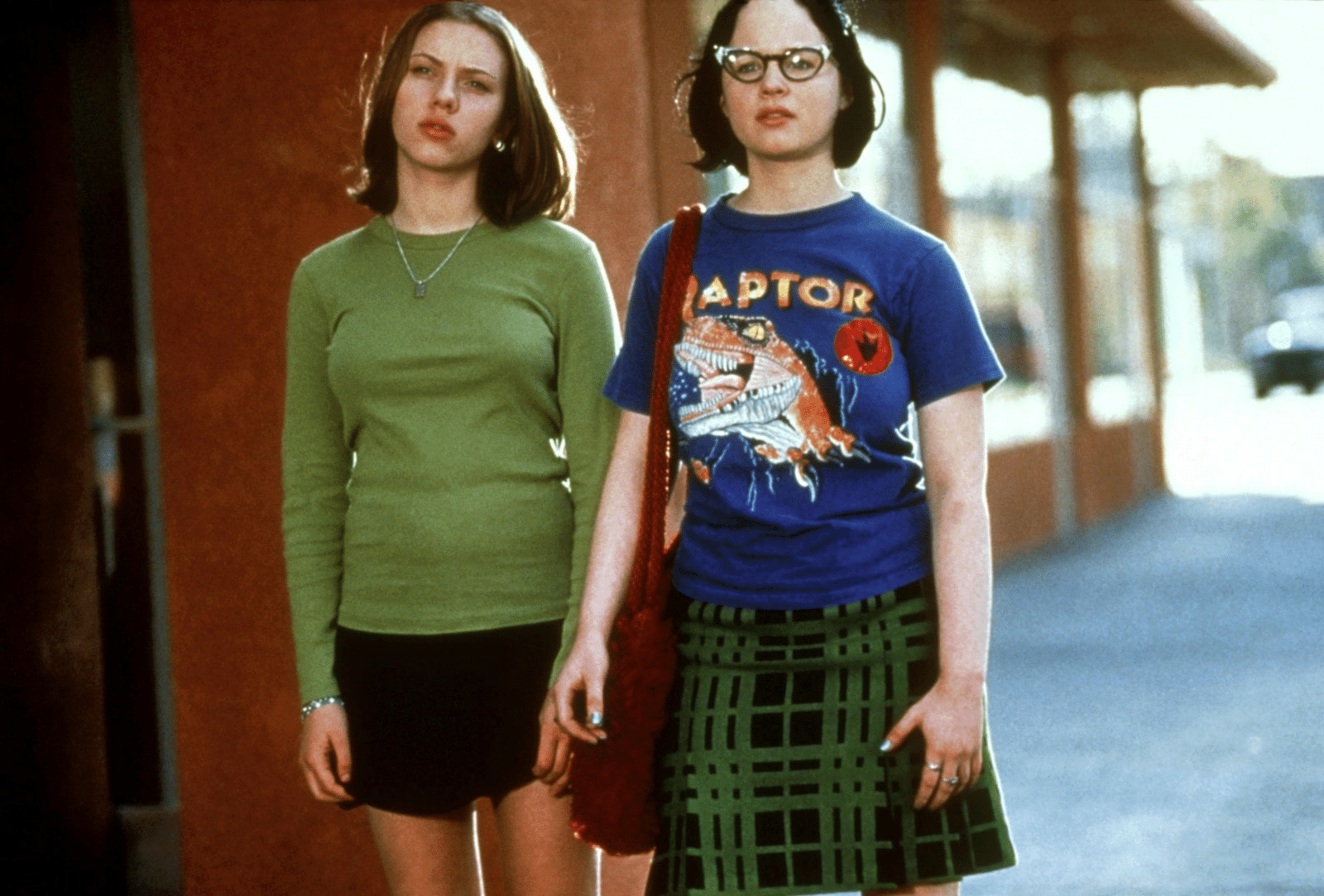
Esta anécdota no solo ilustra el precoz profesionalismo de Johansson, sino que también ofrece una visión fascinante del ambiente en un set de filmación, donde talentos emergentes y profesionales establecidos colaboran en igualdad de condiciones. Para aquellos interesados en explorar cómo el arte del cómic puede intersecarse con otras formas de narración visual, te invitamos a descubrir recursos que ampliarán tus horizontes creativos.
La experiencia de Clowes con Johansson también subraya la importancia de la adaptabilidad y la confianza en el mundo del entretenimiento. Ver a una actriz tan joven navegar con tanta habilidad en un entorno profesional fue una lección valiosa sobre la importancia de la seguridad en uno mismo y la capacidad de mantener la compostura bajo presión, habilidades cruciales tanto en el cine como en el mundo del cómic.
Lecciones aprendidas: Del papel a la pantalla y de vuelta
La experiencia de Daniel Clowes en la adaptación de “Ghost World” al cine fue un viaje de descubrimiento que transformó su perspectiva sobre la narración visual y el proceso creativo. A través de los desafíos y triunfos de este proyecto, Clowes extrajo valiosas lecciones que no solo enriquecieron su trabajo en cómics, sino que también ofrecen insights invaluables para cualquier artista visual.
Una de las principales revelaciones fue la importancia de la flexibilidad creativa. Clowes aprendió que adaptar una obra de un medio a otro no se trata simplemente de una transcripción literal, sino de una reinterpretación que respeta la esencia de la obra original mientras aprovecha las fortalezas únicas del nuevo medio. Esta lección es aplicable no solo a las adaptaciones cinematográficas, sino a cualquier proyecto que implique trasladar una idea de un formato a otro.
Otra lección crucial fue el valor de la colaboración. Aunque Clowes estaba acostumbrado al trabajo solitario del dibujante de cómics, la experiencia cinematográfica le mostró cómo las ideas pueden evolucionar y mejorar a través del aporte de múltiples perspectivas creativas. Este enfoque colaborativo puede ser inspirador incluso para aquellos que trabajan principalmente en solitario, sugiriendo nuevas formas de abordar problemas creativos y enriquecer el proceso artístico.
La adaptación también subrayó la importancia de comprender las fortalezas y limitaciones de cada medio. Lo que funciona en un cómic puede no traducirse directamente al cine, y viceversa. Esta comprensión puede ser invaluable para artistas que buscan expandir su repertorio o experimentar con diferentes formas de expresión visual. Para aquellos interesados en explorar diversas técnicas narrativas visuales, haz clic aquí para acceder a recursos que ampliarán tus habilidades creativas.
Quizás la lección más personal para Clowes fue la reafirmación de su pasión por el cómic. A pesar de las emocionantes oportunidades que ofrece el cine, Clowes encontró que su verdadera vocación seguía siendo la creación de narrativas gráficas. Esta experiencia le permitió apreciar aún más las cualidades únicas del cómic como medio de expresión, reforzando su compromiso con el arte que lo había definido como creador.
Conclusión: Un viaje de ida y vuelta entre dos mundos
La aventura de Daniel Clowes en la adaptación de “Ghost World” al cine representa mucho más que la simple transformación de un cómic en película. Es un testimonio de la versatilidad del arte narrativo y de cómo las historias pueden evolucionar y adquirir nuevas dimensiones al cruzar las fronteras entre diferentes medios.
A través de los desafíos y triunfos de este proceso, Clowes no solo enriqueció su comprensión del cine, sino que también profundizó su aprecio por el arte del cómic. La experiencia le permitió ver su propio trabajo desde una nueva perspectiva, inspirándolo a seguir innovando y explorando los límites de la narrativa gráfica.
Para los aspirantes a artistas y narradores visuales, la historia de Clowes ofrece valiosas lecciones sobre la importancia de la adaptabilidad, la colaboración y la autenticidad creativa. Demuestra que, aunque cada medio tiene sus propias reglas y desafíos, la esencia de una buena historia y unos personajes bien desarrollados puede trascender cualquier formato.
Al final, la experiencia de Clowes nos recuerda que el verdadero arte no conoce límites. Ya sea en las páginas de un cómic o en la pantalla grande, lo que realmente importa es la capacidad de conectar con el público y transmitir emociones e ideas de manera auténtica y poderosa.
Si esta historia ha despertado tu curiosidad por explorar nuevas formas de expresión artística o perfeccionar tus habilidades en el cómic y la ilustración, te invitamos a dar el siguiente paso en tu viaje creativo aquí. Recuerda, cada trazo, cada viñeta y cada historia es una oportunidad para crecer como artista y narrador.
El viaje de “Ghost World” del papel a la pantalla es un testimonio del poder transformador del arte y una inspiración para todos aquellos que sueñan con dar vida a sus historias, sin importar el medio que elijan. ¿Quién sabe? Tal vez tu próxima creación sea la que cruce fronteras y cautive audiencias en formas que ni siquiera has imaginado aún.
Bibliografía:
«je crois que je me suis toujours senti à part »: Entrevista con Dan Clowes, por Jean-Pierre Mercier. Artículo publicado en neuvièmeart 2.0 en febrero de 2010
Entrevista a Daniel Clowes, por Giovanni Casella. Artículo publicado en zonanegativa en abril de 2019.

